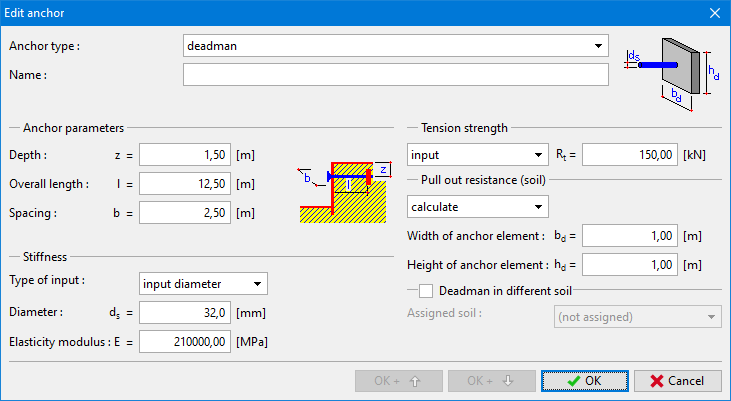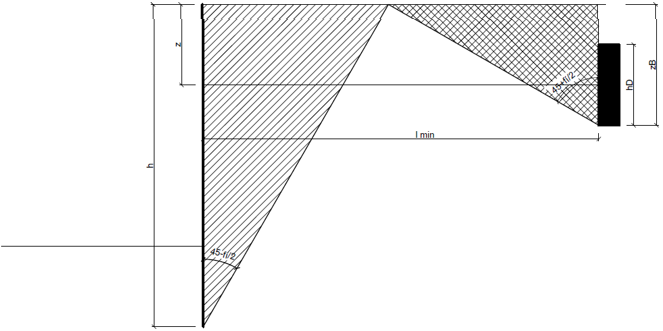Deadman
The "Deadman" is selected as an "Anchor type" in the combo list in the dialog window "New anchor".
The deadman anchor requires the input of:
- Location of anchor - depth, length, spacing
- Stiffness of anchor - anchor diameter ds or area of anchor A, elasticity modulus E
- Parameters for verification of anchor (Strength of anchor, Pull-out resistance from the soil is described below)
 Deadman parameters input
Deadman parameters input
Deadman analysis
The deadman consists of a bar with a specified length and anchor element.
The pull out resistance from the soil is equal to the passive resistance along the height of the anchoring element, which is reduced by a coefficient k:
![]()
For h = 0:
![]()
For h ≥ b - bD:
![]()
where: | h | - | height of the overburden over the anchor element |
bD | - | width of the anchor element | |
b | - | spacing between the anchor elements | |
hD | - | height of the anchor element | |
zB | - | depth of the bottom edge of anchor element | |
Kp | - | coefficient of the passive earth pressure | |
γ | - | unit weight of the soil |
The coefficient k is interpolated for the intermediate values of h. Maximum value of coefficient k is 1.00.
Calculation of the overburden over the anchor element:
![]()
where: | z | - | depth of deadman |
The full pull out resistance is activated if active and passive earth wedges do not intersect.
The minimum length of the bar for full pull out resistance is computed as follows:
![]()
where: | φ | - | angle of internal friction |
h | - | height of shoring structure |
In case that the length of bar l is shorter than the minimum length of bar lmin, the passive pressure is considered from the intersection of active and passive earth wedges.
 The principle of determining the minimum length for deadman´s bar
The principle of determining the minimum length for deadman´s bar